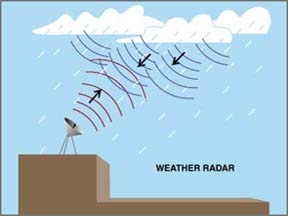Picture of a May 11, 1991, tornado in Cimarron County, Oklahoma
Click on image for full size
Greg Stumpf
Tornadoes
Tornadoes form from severe thunderstorms. They have a very high energy density which means that they are very destructive to a small area. They also don't last very long which makes them hard to study. Without much information about how they develop, meteorologists have a hard time forecasting when they'll form. The general public knows even less about tornadoes, which is why there are so many inaccurate myths about them. 75% of the world's tornadoes occur in the United States, but they can (and probably have) developed anywhere. Most tornadoes in the U.S. form in an area of the Great Plains known as Tornado Alley. There are also some other interesting facts about tornadoes. People with an interest in tornadoes sometimes attend classes held by the National Weather Service to become trained as tornado spotters. Sometimes people travel out to Tornado Alley to chase tornadoes either to research these powerful storms or to photograph them. When a tornado touches down, scientists try and figure out how strong it was by using the Enhanced Fujita Tornado Scale.
You might also be interested in:

Most tornadoes form in a part of a supercell thunderstorm called a mesocyclone. The mesocyclone draws energy into the storm so it can last for hours. Scientists aren't sure why, but some can create tornadoes.
...more
Thunderstorms are one of the most thrilling and dangerous types of weather phenomena. Over 40,000 thunderstorms occur throughout the world each day. Thunderstorms form when very warm, moist air rises into
...more
The land which stretches from Texas to Manitoba is relatively flat, most of which is part of the Great Plains in the United States. The flat land is a good breeding ground for the storms which produce
...more
A 200-year-old report by a sea captain and photographs of the 2008 eruption of Mount Chaiten are helping scientists better understand strong volcanic plumes. In a paper published this week in the journal
...more
A supercell thunderstorm is a huge rotating thunderstorm. It can last for several hours as a single entity. These storms are the most likely to produce long-lasting tornadoes and baseball-sized hail. Tornadoes
...more
Cumulonimbus (weather symbol - Cb) clouds belong to the Clouds with Vertical Growth group. They are generally known as thunderstorm clouds. A cumulonimbus cloud can grow to such heights that it actually
...more
Radar is important to weather forecasters because it can detect rain and hail in clouds. The radar emits radio waves in all directions. When a radio wave hits water or ice particles, some of the energy
...more














